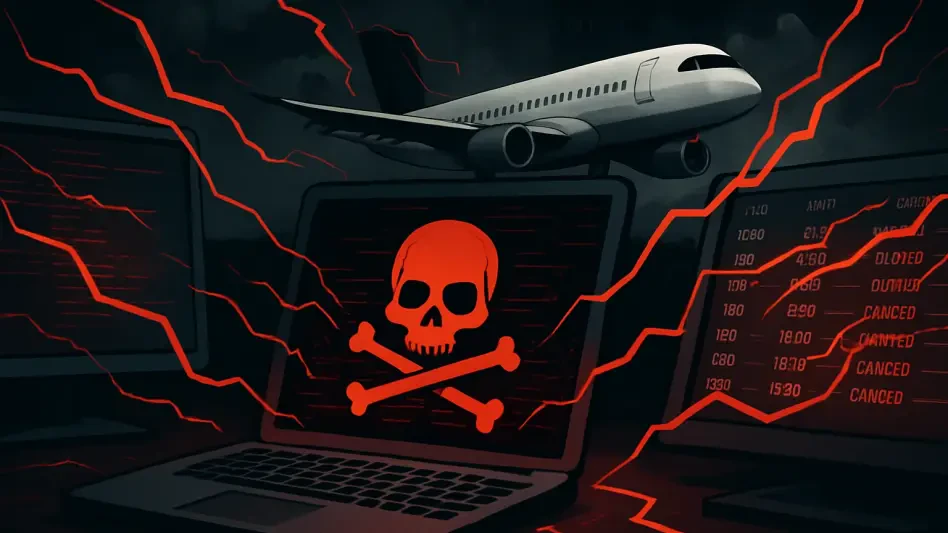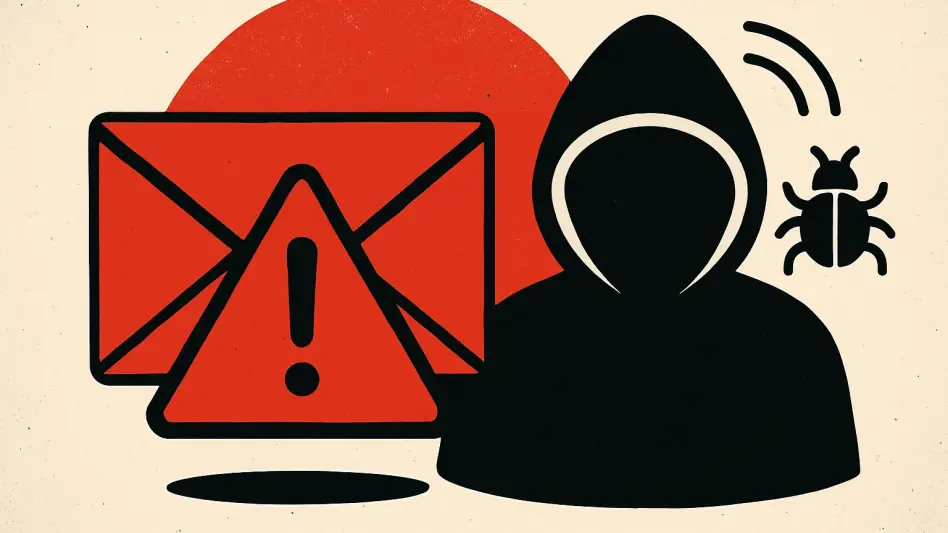In an era where digital infrastructure underpins nearly every aspect of modern business, the aviation industry finds itself increasingly targeted by sophisticated cyber threats, as vividly demonstrated by a devastating attack on Krasnoyarsk Regional Airlines, commonly known as KrasAvia. This Russian airline, crucial for connecting remote regions, suffered a severe breach that knocked out its online services and operational systems, exposing the fragility of interconnected technology in the sector. Detected early in the morning around 08:00 MSK, the incident disrupted critical functions like ticketing and check-in, forcing a reliance on manual processes. As passengers scrambled to adapt, the event raised pressing questions about the vulnerabilities inherent in airline IT systems and the broader implications for aviation cybersecurity. This disruption serves as a stark reminder of how quickly a cyberattack can ground even the most essential services, pushing the industry to confront its digital weaknesses head-on.
Unraveling the Incident
Initial Detection and Immediate Fallout
The cyberattack on KrasAvia struck with alarming precision, targeting the airline’s website, Passenger Service System (PSS), and flight planning applications, effectively halting online ticketing and check-in services. As a direct consequence, passengers were left with no choice but to turn to call centers or offline ticketing agencies for travel arrangements, a cumbersome shift that underscored the depth of the disruption. Communication from the airline was limited to updates via a Telegram channel, as the main website remained inaccessible. This sudden pivot to manual operations for flight assignments, crew scheduling, and ground handling revealed the extent to which digital systems are the backbone of modern aviation. While passenger safety was reportedly unaffected due to adherence to standard operating procedures by flight crews, the immediate impact on customer experience was undeniable. The reliance on outdated fallback methods highlighted a critical gap in preparedness for such large-scale digital failures.
Technical Nature of the Attack
Delving deeper into the breach, initial findings from KrasAvia’s network intrusion detection system (IDS) pointed to a complex assault combining a distributed denial-of-service (DDoS) attack with unauthorized access attempts. Further analysis uncovered malicious payloads that likely exploited a zero-day vulnerability, allowing attackers to bypass firewalls and deploy custom malware within the corporate network. This sophisticated approach suggests a high level of planning and technical expertise behind the incident, raising concerns about the potential for similar attacks across the industry. In response, KrasAvia isolated affected servers and activated an incident response plan, while also bringing in an external digital forensics team to conduct a root cause analysis. An internal audit, supported by Russian authorities such as Roskomnadzor and CERT-RU, aims to determine the full scope of any data breaches. Though specifics on data loss remain undisclosed, the technical intricacy of this attack signals a growing threat to aviation infrastructure worldwide.
Broader Implications for Aviation Cybersecurity
Industry-Wide Vulnerabilities Exposed
The attack on KrasAvia is not an isolated event but rather a reflection of systemic vulnerabilities within the aviation sector, where reliance on interconnected IT and operational technology (OT) systems often outpaces security measures. Many airlines operate on legacy infrastructure that lacks modern safeguards such as multi-factor authentication (MFA) or real-time endpoint detection and response (EDR), making them prime targets for cybercriminals. A similar incident earlier this year involving Aeroflot, caused by vulnerabilities in third-party software and remote access trojans (RATs), further illustrates this troubling pattern. Industry experts emphasize that the interconnected nature of airline systems, while essential for efficiency, becomes a liability when not paired with robust defenses. The KrasAvia breach serves as a critical wake-up call, highlighting the urgent need for airlines to modernize outdated systems and adopt comprehensive cybersecurity frameworks to protect against evolving threats.
Steps Toward a Resilient Future
Looking ahead, the KrasAvia incident underscores the necessity for the aviation industry to prioritize enhanced cybersecurity through collaborative efforts and improved threat intelligence sharing. Airlines must invest in upgrading their digital infrastructure to incorporate advanced security protocols that can detect and mitigate attacks in real time. Beyond individual company actions, sector-wide initiatives are crucial to address the recurring nature of such disruptions and to safeguard critical infrastructure from future threats. KrasAvia’s ongoing efforts to minimize passenger inconvenience, despite the unclear timeline for system recovery, reflect a commitment to resilience, but the broader challenge remains. The outcome of the current investigation and subsequent audits will likely shape how other airlines approach their cybersecurity strategies. As updates emerge through social media and official channels, the industry must seize this moment to build stronger defenses, ensuring that digital vulnerabilities do not continue to jeopardize operational stability.








